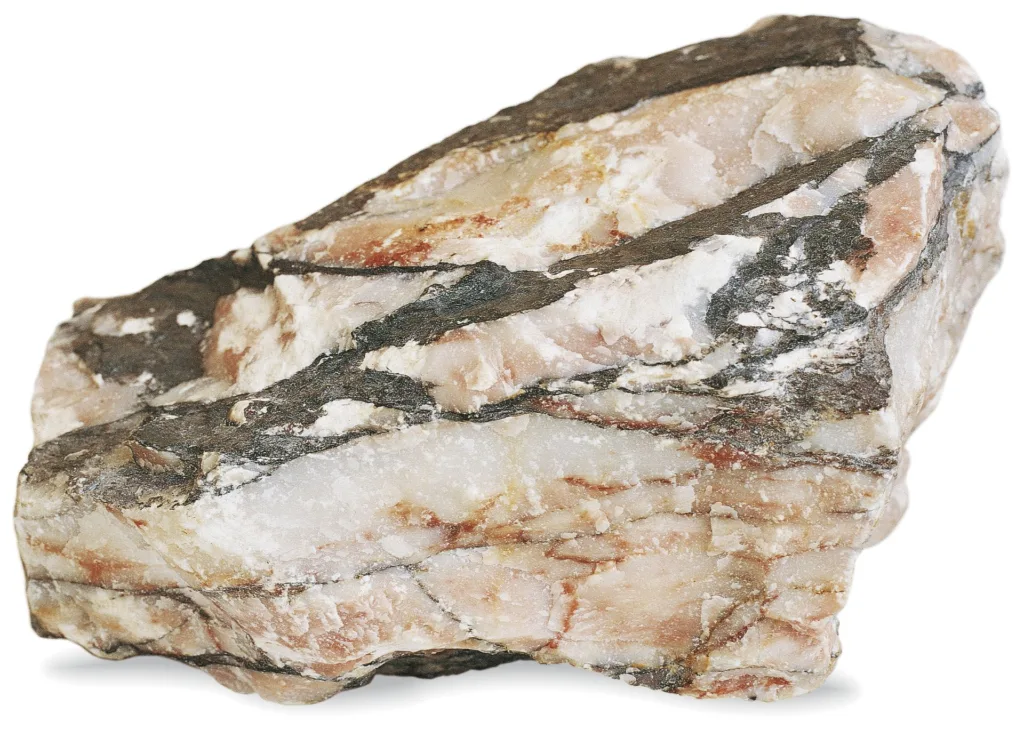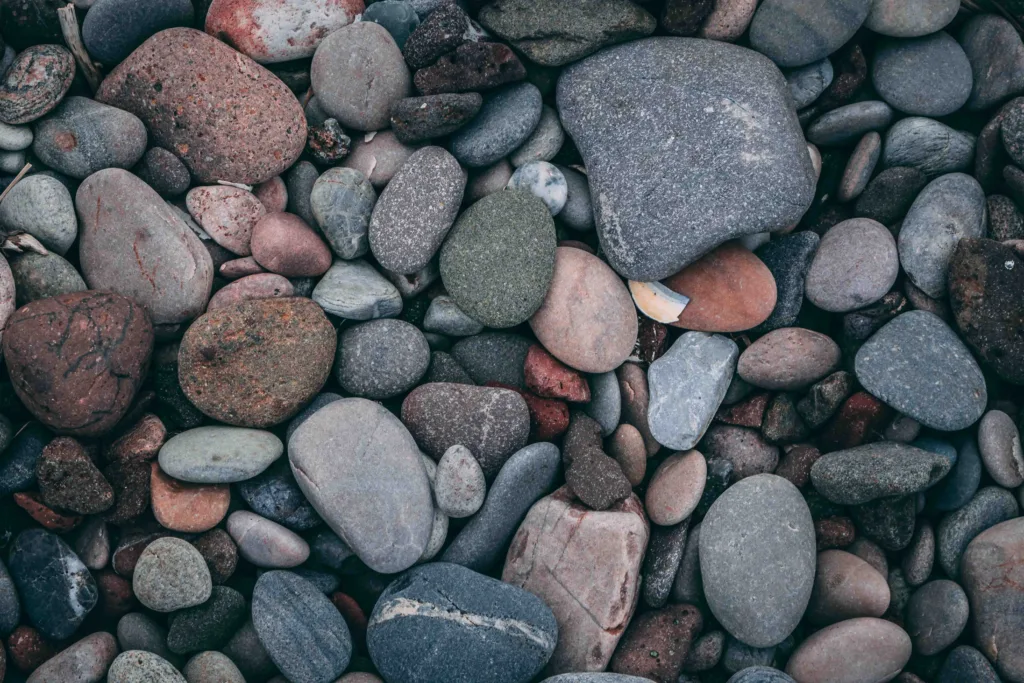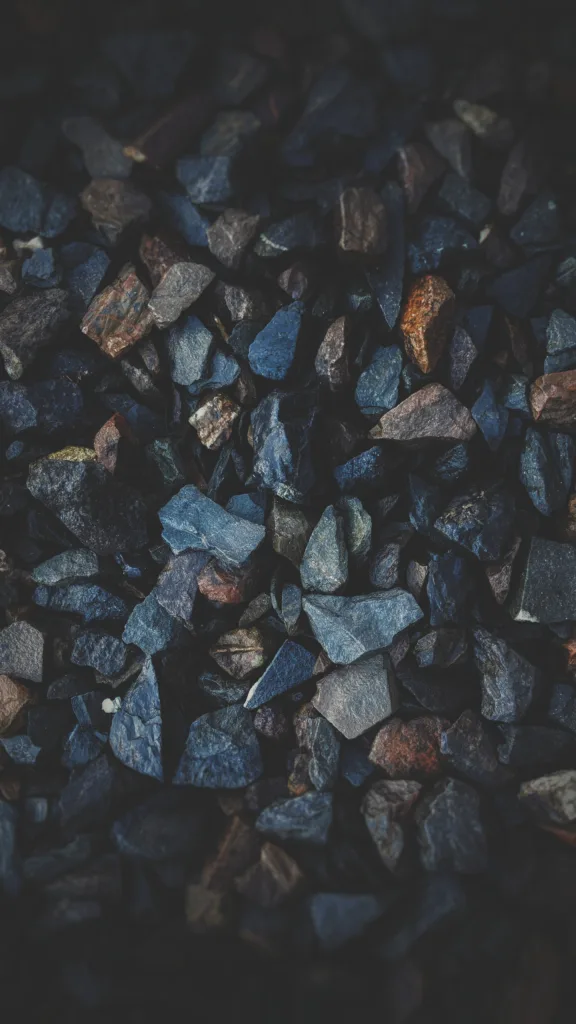Metamorphic rocks are a unique type of rock that can be found all over the world. They are created by the combination of intense pressure and heat, which cause them to transform from one type of rock into another. These rocks have some distinct characteristics that make them stand out from other types of rocks.
The most obvious characteristic of metamorphic rocks is their banded appearance, or lack thereof. This banding occurs due to the minerals within the rock being forced together under great heat and pressure. The bands can be in any direction and may conain multiple minerals with different colors and textures.
Another characteristic of metamorphic rocks is the presence of certain planar features known as s-surfaces. These are formed as a result of the minerals within the rock becoming rearranged due to intense pressure and heat. The simplest planar features may be primary bedding, which is similar to the layering seen in sedimentary rocks.
In addition, metamorphic rocks often contain traces of fossils if they were not subjected to too much pressure during their transformation process. This is due to some parts of organic material remaining intact during the transformation process, leading to preserved fossil remains in some cases.
Finally, metamorphic rocks can also contain various minerals, crystal structures, and other materials that were formed by the intense heat and pressure applied during their transformation process. These minerals can range from quartz and feldspar to garnet and mica, depending on what type of original rock was transformed into a metamorphic one.
Overall, metamorphic rocks have many distinct characteristics that set them apart from other types of rocks found around the world. From their banded appearance or lack thereof to their mineral composition and traces of fossils, these unique rocks are truly fascinating specimens that deserve appreciation!
Characteristics of Metamorphic Rocks
Metamorphic rocks have four main characteristics: they are formed through the process of metamorphism, they can show banding or lack of banding, they contain minerals and crystal structures, and sometimes traces of fossils. Metamorphism results from heat and/or pressure applied to existing rocks, which causs them to change in texture and composition. The heat and/or pressure cause changes in the mineralogy of the rock, which can be seen as distinct bands or layers. These bands and layers often contain different minerals than the original rock had. Additionally, many metamorphic rocks contain traces of fossils that were present in the original pre-metamorphic rock. Finally, metamorphic rocks are generally found near tectonic plate boundaries where plates come together or converge.

Characteristics of Metamorphic Rocks
The most obvious characteristic of a metamorphic rock is the presence of planar features known as s-surfaces. These planar features are usually the result of tectonic pressure and intense heat, which cause recrystallization within the rock. The s-surfaces are generally parallel to each other and can be seen in the form of banding, foliation, or layering. These structures provide evidence of the process of metamorphism that formed the rock. In addition to s-surfaces, other common characteristics of metamorphic rocks include changes in color or composition due to metamorphic processes, a new mineral assemblage not previously existing in the original parent rock, and a higher density than its parent material.
Classifying Metamorphic Rocks
Metamorphic rocks are classified based on two characteristics: texture and mineral composition. Texture is defined by the grain size, shape, and orientation of the rock’s constituent minerals. Mineral composition is determined by the types of minerals present in the rock, as well as teir relative abundance. For example, a metamorphic rock that contains quartz, feldspar, mica, and other minerals in roughly equal proportions may be classified as a pelitic schist. On the other hand, if the same rock contains greater amounts of quartz and mica than feldspar, it may be classified as a quartz-mica schist. In either case, both texture and mineral composition are taken into account when classifying metamorphic rocks.
Characteristics of Metamorphic Rocks
Metamorphic rocks are formed when exposed to high temperatures and pressures, which cause the minerals that make up the rocks to change. Common characteristics of these rocks include a tightly interlocked mineral structure, which makes them extremely strong and resistant to weathering; a banded or foliated texture due to their recrystallization under pressure; and an often non-layered composition. In addition, many metamorphic rocks contain fossils that have been changed by the intense heat.
Characteristics of Rocks
Rocks can be classified according to five main physical characteristics: cleavage, streak, hardness, fracture and luster.
Cleavage is the tendency of a rock to break along specific planes of weakness. It is caused by the alignment of minerals within a rock that are weaker than the overall structure. When a rock is struck with a hammer or other instrument, it will usually break along these planes of weakness.
Streak is the color that remains when a rock is scraped across an unglazed porcelain plate. This color will represent the minerals in the rock and is an indication of its chemical composition.
Hardness inicates how easily a mineral can be scratched or damaged by another material. The hardness of a mineral on the Mohs scale of hardness ranges from 1 to 10, with 1 being the softest and 10 being the hardest.
Fracture describes how a mineral breaks when struck with an instrument such as a hammer or chisel; some minerals tend to break in jagged pieces while others tend to break in smooth curved lines.
Luster describes how light reflects off of the surface of the mineral; some minerals may have metallic luster while others may have pearly or waxy luster.

Identifying Metamorphic Rocks
Metamorphic rocks can be identified by ther unique characteristics. Generally, they show signs of having been subjected to heat and/or pressure during formation. Common characteristics of metamorphic rocks include a change in mineral composition, a banded or “foliated” texture, and evidence of crushing or shearing along grain boundaries.
The minerals within a metamorphic rock will have new crystal shapes that are different from the original rock due to heat and pressure. The minerals may have re-crystallized or grown together forming new minerals like biotite, amphibole, and chlorite which are all common in metamorphic rocks.
The banding that is found in many metamorphic rocks is caused by different minerals having different rates of growth due to the changing temperature and pressure conditions during the formation process. This banding is referred to as ‘foliation’ and can be seen as alternating layers of light and dark minerals.
The evidence of crushing on grains can also indicate a metamorphic rock; this is caused by pressure acting on the grain boundaries at high temperatures which causes them to deform or become crushed together.
By looking for these indicators it should be possible to identify a metamorphic rock sample with relative ease.
Facts About Metamorphic Rocks
1. Metamorphic rocks are formed through the process of metamorphism, which is the transformation of pre-existing rock in response to changing temperature, pressure and/or chemical environment.
2. Examples of metamorphic rocks include marble, slate, schist and gneiss.
3. By studying the composition and textures of metamorphic rocks, geologists can gain insights into the conditions under which it was formed, such as temperature and pressure ranges, as well as its original form before being changed.
Formation and Characteristics of Metamorphic Rocks
Metamorphic rocks form when rocks are exposed to extreme temperatures and pressures. This intense heat and/or pressure causes the minerals in the rocks to rearrange, creating new minerals and textures. This process is knwn as metamorphism. Some common changes that take place during metamorphism include a change in grain size, a change in mineral composition, and the creation of new minerals.
Characteristics of metamorphic rocks can vary widely depending on their original parent rock and the environment where they underwent metamorphism. They often have an interlocking texture caused by recrystallization of grains under pressure. Metamorphic rocks may also be foliated or non-foliated – foliated meaning they contain parallel layers or bands of minerals caused by compression from tectonic forces, and non-foliated meaning that the minerals are arranged haphazardly without any distinct pattern or layering. They can also vary in color depending on the type of minerals present, but are generally darker than their parent rock due to increased chemical alteration of their components during metamorphism.
Types of Metamorphic Rocks
Metamorphic rocks can be identified by five basic textures.
Slaty texture is commonly found in slate and phyllite, and the foliation of these rocks is known as ‘slaty cleavage’. Schistose texture is seen in schists, where the foliation is referred to as ‘schistocity’. Gneissose texture occurs in gneisses, and this foliation is called ‘gneisocity’. Granoblastic texture is found in granulite, cerain marbles and quartzites. The fifth texture, Hornfelsic, is found in hornfels and skarn.
Each of these metamorphic rock textures can be further studied to determine the type of metamorphism that has occurred. By considering the mineralogy and structure of each rock type, geologists are able to identify the environmental conditions that have caused them to form.

Formation of Metamorphic Rocks
Metamorphic rocks form when existing rock is subjected to extreme heat and pressure. This process, known as metamorphism, can occur trough three main types: Contact Metamorphism, Regional Metamorphism, and Dynamic Metamorphism.
Contact Metamorphism is caused by the heat from a nearby magma intrusion or other intrusive igneous activity. This type of metamorphism primarily affects the surrounding rocks in the immediate vicinity of the intruding magma. The heat causes chemical reactions to take place in the existing rock which results in its transformation into a new metamorphic rock.
Regional Metamorphism is caused by large-scale tectonic forces that compress and heat up large areas of crustal rocks over time. This type of metamorphism often forms mountain ranges as it slowly deforms and recrystallizes entire regions of crustal rock into new metamorphic formations.
Dynamic Metamorphism is caused by extremely high pressure that is generated from plate tectonic collisions or impacts from meteorites. These events cause intense shock waves that create intense localized pressures within Earth’s crustal rocks, which then result in rapid transformations into new metamorphic rocks.
Examples of Metamorphic Rocks
Metamorphic rocks are formed when existing rocks undergo a process of physical and/or chemical change due to intense heat and pressure. These extreme conditions cause the minerals in the rock to recrystallize, forming new minerals that give the rock its distinctive texture and appearance. Five examples of metamorphic rocks include:
1. Gneiss – Gneiss is a foliated metamorphic rock formed from sedimentary or igneous rocks with alternating light and dark bands. It is composed of quartz, feldspar, mica, and other minerals.
2. Slate – Slate is a low-grade metamorphic rock composed of clay minerals, quartz, and mica. It has a characteristic layered structure with flat layers that break easily into thin sheets.
3. Marble – Marble is a metamorphic limestone created when calcite or dolomite crystals are subjected to intense heat and pressure over time. It comes in many colors and can be highly polished for use as countertops or building material.
4. Schist – Schist is a medium-grade metamorphic rock that forms intricate folded structures due to its tendency to split aong foliation planes. It consists of alternating layers of different minerals such as quartz, mica, hornblende, muscovite, and biotite.
5. Quartzite – Quartzite is an extremely hard metamorphic rock formed when sandstone undergoes high temperatures and pressures during mountain building processes such as orogeny or subduction zones. Its composition consists mainly of quartz grains bound together by silica cementing agents like clay minerals or iron oxide compounds.
Six Characteristics of Rocks
Rocks can be characterized by six key properties: texture, mineral composition, color, grain size, porosity, and permeability. Texture dscribes the size and shape of the individual grains that make up a rock. Mineral composition is determined by the minerals that are present in a rock. Color is determined by what minerals are present in a rock as well as the presence of any impurities or trace elements. Grain size describes how the individual grains of a rock fit together and range from very fine-grained (clay) to large-grained (sandstone). Porosity refers to how much space within a rock is filled with air or water; permeability measures how easily fluids can flow through the pore spaces of a rock. Together, these characteristics help geologists identify different types of rocks.
Characteristics of Sedimentary and Metamorphic Rocks
Sedimentary rocks are created when sediment such as sand, silt, and other particles settle in layers and are then compacted and cemented together. These rocks can oten be identified by their layered appearance and may show evidence of biological activity that formed the rock, such as fossils. Common sedimentary rocks include sandstone, shale, and limestone.
Metamorphic rocks form when existing rocks are exposed to great heat and pressure deep within the Earth’s crust. This causes the minerals in the rock to rearrange into new configurations while retaining their original chemical composition. Metamorphic rocks may have a banded or foliated appearance due to the re-alignment of minerals during metamorphosis. Common metamorphic rocks include marble, gneiss, schist, and slate.
Characteristics of High Grade Metamorphic Rocks
High-grade metamorphic rocks are those which have been subjected to intense temperature and pressure, resulting in significant canges to their mineralogy and texture. These rocks display several distinguishing characteristics, including:
1) Coarse-grained texture: High-grade metamorphic rocks tend to have a coarser grain size than low-grade metamorphic rocks due to the increased temperatures and pressures used during their formation.
2) Presence of recrystallized minerals: High-grade metamorphic rocks typically contain newly formed minerals that have been recrystallized under high temperature and pressure conditions. These minerals may include quartz, mica, chlorite, garnet, staurolite, and kyanite.
3) Foliated structure: The intense heat and pressure applied during high grade metamorphism cause the rock layers to bend and fold into a foliated structure. This foliation is caused by the alignment of platy or elongated minerals such as micas or chlorites.
4) Intensely coloured bands: High grade metamorphism can cause intense colour variations throughout the rock due to the introduction of various coloured minerals or chemical compounds. For example, iron can be oxidized during high grade metamorphism leaving behind an orange or reddish hue in some layers of the rock.
5) Hardness: High-grade metamorphic rocks tend to be harder than their low-grade counterparts due to the increased crystallization caused by higher temperatures and pressures.
Conclusion
In conclusion, metamorphic rocks are characterized by their formation that occurs with great heat and pressure. These rocks often have planar features called s-surfaces and can contain minerals, crystal structures, and traces of fossils. The texture of the rock is determined by its grain size, shape and orientation. Metamorphic rocks are generally strong due to their tightly compacted mineral grains and can be found near tectonic plates where the plates come together or converge. With these characteristics in mind, it is easy to understand why metamorphic rocks are some of the most unique types of rock found in nature.
